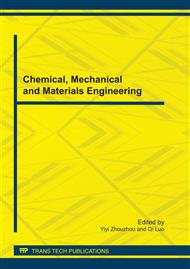p.13
p.19
p.25
p.29
p.35
p.43
p.48
p.53
p.59
The Effects of Filter Ventilation on Flavor Constituents in Cigarette Smoke
Abstract:
In order to study the effects of filter ventilation on flavor constituents in cigarette smoke, the deliveries of 20 added flavor constituents (showed in table 2) and routine components (including TPM, nicotine, tar, carbon monoxide and water) in cigarette mainstream smoke were studied when filter ventilation were 0, 10%, 30%, 50% and 70% respectively. The flavor substance test was done by addition of standard samples. The flavor constituents were identified and determined quantitatively by gas chromatopraphy -mass spectrometry (GC/MS) and capillary gas chromatography (GC) and their condensate were separated by simultaneous distillation-extraction (SDE) and GC. The deliveries of routine components in mainstream smoke were determined according to international standard methods. It was found that the flavor constituents and routine components in mainstream smoke decreased in different proportions as the filter ventilation increased. Carbon monoxide and tar decreased more than nicotine. The flavor constituents with lower boiling points and molecular weights decreased more than those with higher. With the increase of filter ventilation, not only is the amount of smoke components reduced and the smoke taste weakened, but also the composition of smoke is modified and the quality of aroma changed slightly. Therefore, when low-tar cigarettes are made through the use of ventilation technology, different constituents and their changes should be taken into account in order to determine appropriate leaf group blending and flavoring.
Info:
Periodical:
Pages:
35-42
Citation:
Online since:
July 2011
Keywords:
Price:
Сopyright:
© 2011 Trans Tech Publications Ltd. All Rights Reserved
Share:
Citation:


